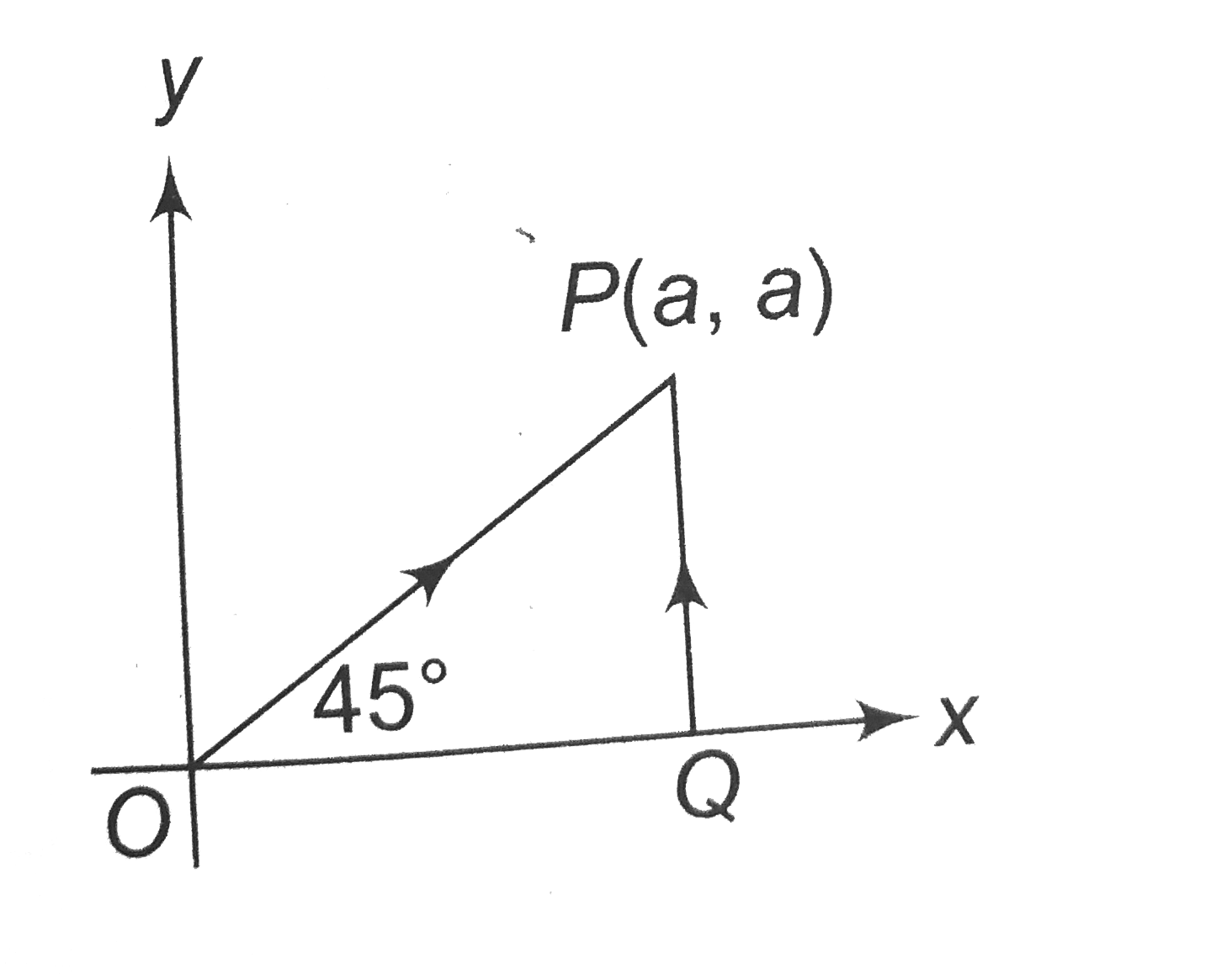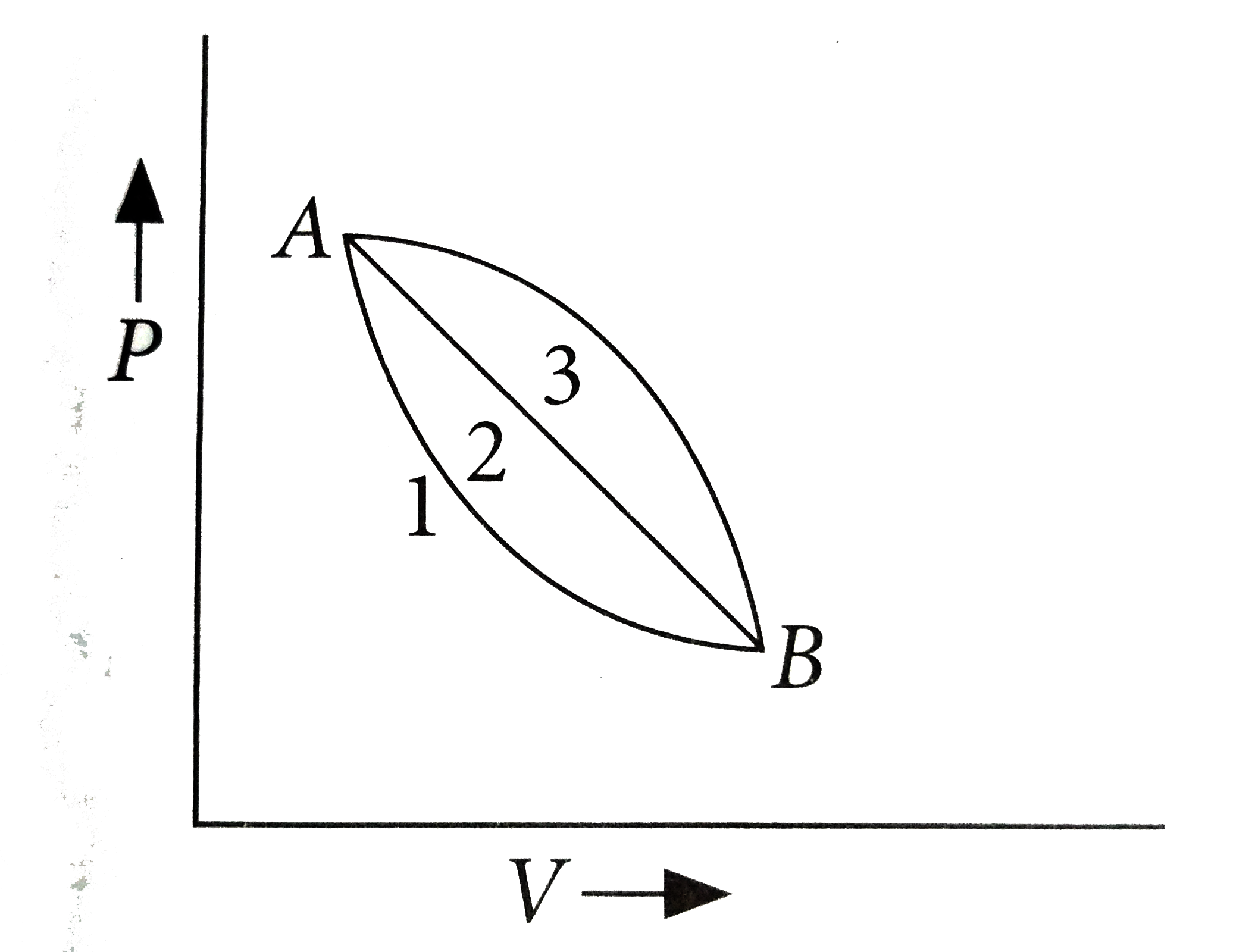A particle is moved from (0,0)to (a,a) under a force ¯¯¯F=(3ˆi+4ˆj) and path 2isOQP.Let W1andW2 be the work by done this force in these to paths .Then .

W1=W2
W1=2W2
W2=2W2
W2=4W1
The correct Answer is:A
The force is constant and hence conservative W1=W2
Similar Questions
A given mass of gas expands from state A to state B by three paths 1, 2, and 3 as shown in the figure :

If w1,w2andw3 respectively, be the work done by the gas along three paths, then
View SolutionA particle is moved from (0,0) to (a, a) under a force →F=(3ˆi+4ˆj) from two paths. Path 1 is OP and path 2 is OQP. Let W and W be the work done by this force in these two paths.Then

View SolutionOne particle one force F =(3hat(i) + 4hat(j)) Under (0, 0) to (a, a), it moves through two paths. Path 1 is OP and path 2 is OQP. Let the work done by this force in both these paths W_(1) And W_(2) is. so -
View SolutionA particle is moved from (0, 0) to (a, a) under a force a F=(3hat(i)+4hat(j)) from two paths. Path 1 is OP and path 2 is OPQ. Let W_(1) and W_(2) be the work done by this force in these two paths. Then,
View SolutionIf W_(1) W_(2) and W_(3) represent the work done in moving a particle from A to B along three different paths 1.2 and 3 respectively (asshown ) in the gravitational fieled of a point mass m, find the correct relation between W_(1) W_(2) and W_(3)
View Solutionएक कण बल →F=xˆj के अधीन ( x मीटर में है ) बिन्दु O से बिन्दु A तक पथ 1(OBA) है तथा पथ 2 ( OA सरल रेखा के अनुदिश है )के अनुदिश गति करता है। यदि इन दोनों पथो के अनुदिश बल →F द्वारा गया कार्य क्रमश : W1 तथा W2 हो तो W1W2 का अनुपात ज्ञात करो

View SolutionA particle is moved from (0, 0) to (a, a) under a force F =(x^(2)hati+y^(3)hatj) from two paths. Path 1 si OP and Path 2 is OQP . Let W_(1) and W_(2) be the work done by this force in these two paths. Then
View SolutionIf W_(1) W_(2) and W_(3) represent the work done in moving a particle from A to B along three different paths 1.2 and 3 respectively (asshown ) in the gravitational fieled of a point mass m, find the correct relation between W_(1) W_(2) and W_(3)
View Solution
